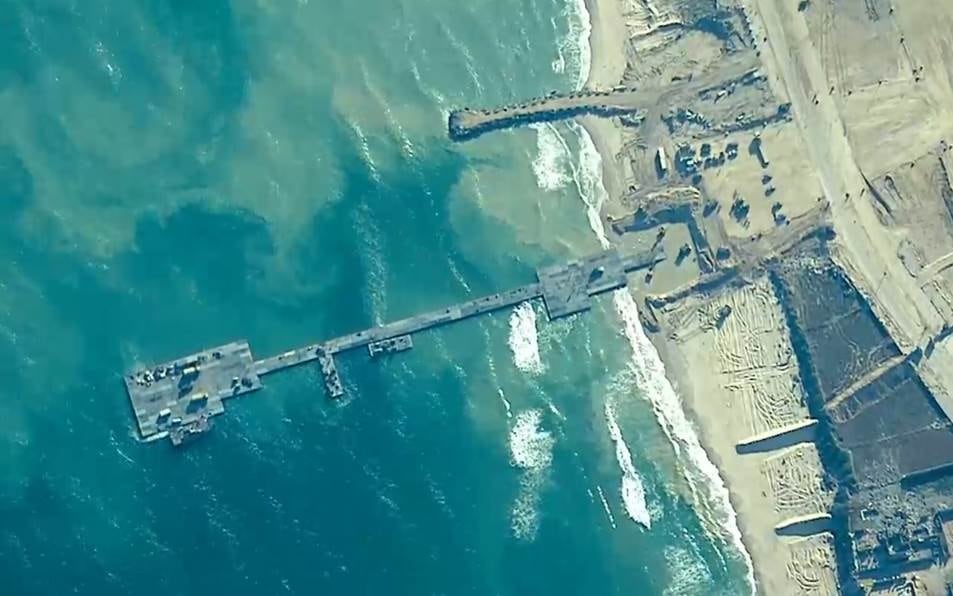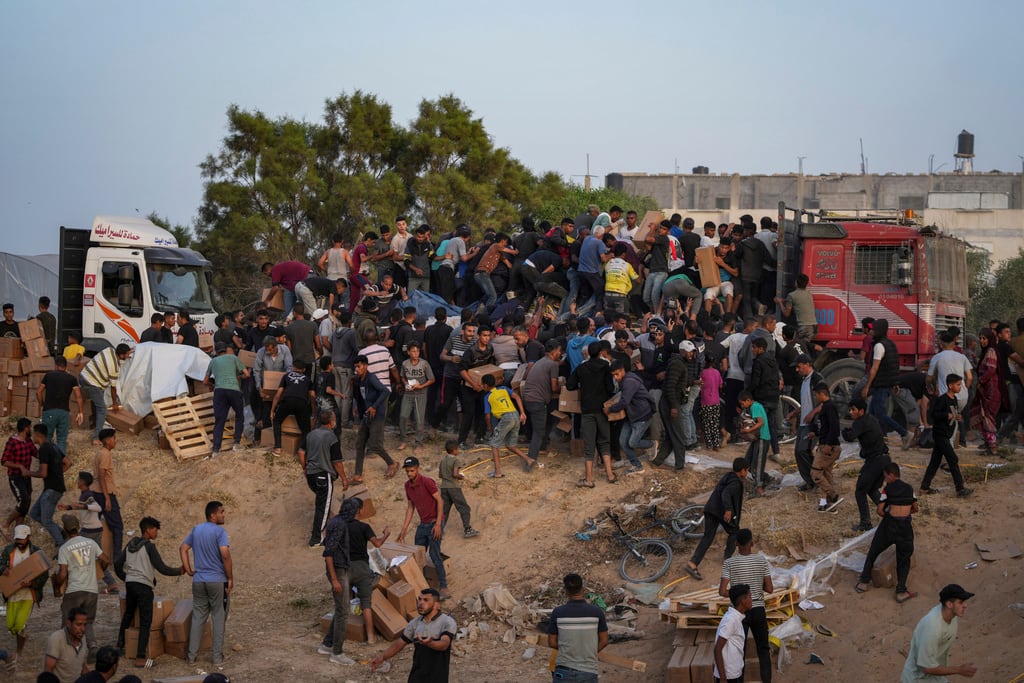Editor’s note: This story was updated May 21 8:26 p.m. E.T. to include further comment from Pentagon and U.N. officials.
An effort involving the U.S. military to surge much-needed humanitarian aid to Palestinians in the Gaza Strip is off to a chaotic start, with aid trucks being overrun and at least one person feared dead over the weekend, prompting a pause in aid distribution.
U.S. soldiers and sailors built a floating pier off Gaza and stabbed it into a Gaza beach on Friday with the help of Israeli forces.
RELATED

The plan, announced by President Biden in his State of the Union address and using a capability known as Joint Logistics Over-the-Shore, or JLOTS, has been touted as another way to get food to Gazans caught between the Israeli military and the Palestinian militant group Hamas, which attacked Israel on Oct. 7.
It involves no U.S. troops on the ground in Gaza, as the U.S. military’s efforts have involved building the massive floating platform and pier that was installed last week.
But aid trucks stopped trundling off the military’s floating pier on Saturday, and only resumed moving out into Gaza on Tuesday, according to Pentagon officials. The U.N. said it was not aware of any deliveries on Tuesday, however.
Pentagon spokesman Maj. Gen. Pat Ryder said Tuesday that the issues have arisen once the aid was loaded onto nongovernmental organization trucks, departed the marshaling area and headed toward distribution warehouses in Gaza.
Over the weekend, some of those trucks were overtaken by Palestinians, according to U.N. officials.
Only five of the 16 aid trucks that left the secured area on Saturday arrived at the intended warehouse with their cargo intact, U.N. World Food Program spokesperson Steve Taravella told The Associated Press. He said the other 11 trucks were waylaid by what became a crowd of people and arrived without their cargo.
Authorities have offered few firm details of what transpired Saturday. Hamas has said the group will resist any foreign presence associated with the project, but it remains unclear whether the group was involved in the weekend’s aid disruption.
However, Associated Press video shows Israeli armored vehicles on a beach road, then aid trucks moving down the road.
Civilians watching from the roadside gradually start to clamber on top of the aid trucks, throwing aid down to people below. Numbers of people then appear to overrun the aid trucks and their goods.
At one point, members of the crowd are shown carting a motionless man with a chest wound through the crowd. A local morgue later confirmed to the AP the man had been killed by a rifle shot. At another point, shots crackled, and some of the people in the crowd are shown apparently ducking behind aid boxes for cover.
It was not clear who fired the shots.
Asked about the shooting, the Israeli army told the AP, using the acronym for the Israel Defense Forces: “The IDF is currently focused on eliminating the threat from the terrorist organization Hamas.”
Ryder said that as of Tuesday 569 metric tons of aid has been delivered to the secured area at the Gaza port. Some of it remains there, however, because distribution agencies are working to find alternative routes to warehouses in Gaza.
Asked if any aid from the pier had yet reached Gaza residents in need, Ryder said, “I do not believe so.” He said aid had resumed moving Tuesday from the secured area into Gaza, after what had been a two-day halt following Saturday’s disruption. He gave no immediate details.
After the chaotic launch, WFP officials said Tuesday that the pier project may fail unless Israel starts providing the conditions that humanitarian groups need to operate safely.
Ryder acknowledged the challenges involved in the effort and said that alternate routes were being examined.
He also noted that Israeli forces ashore and at sea, as well as Navy destroyers, are patrolling to ensure the safety of the U.S. troops involved in the JLOTS effort.
“This is a combat zone, and this is a complex operation,” he said Tuesday. “And so we’ve been very clear from the beginning that we’re going to take a crawl-walk-run approach.”
Geoff is the managing editor of Military Times, but he still loves writing stories. He covered Iraq and Afghanistan extensively and was a reporter at the Chicago Tribune. He welcomes any and all kinds of tips at geoffz@militarytimes.com.




